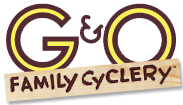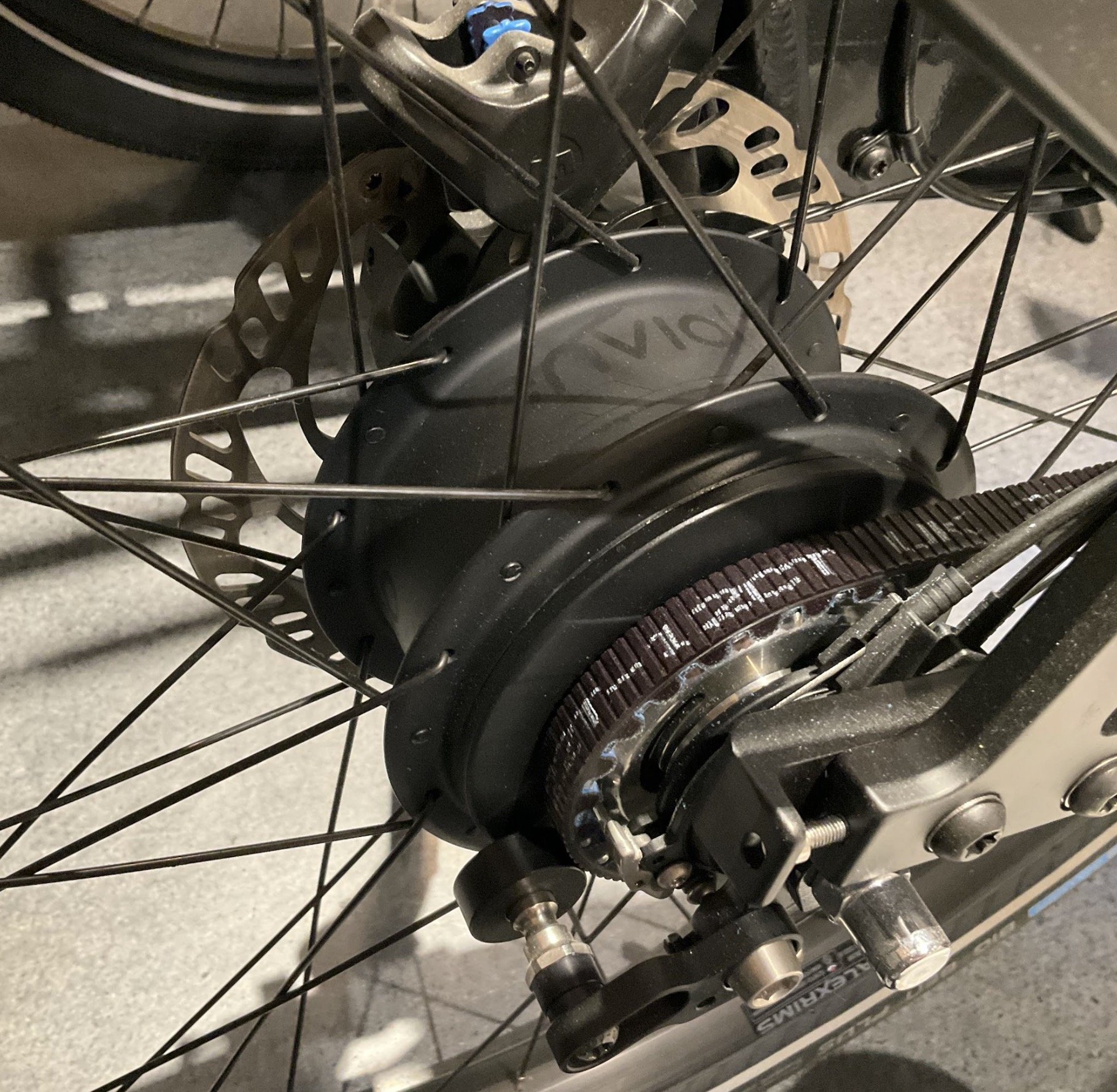Understanding Gearing, Gear Range, and Gear Ratio
Something that comes up a lot in Seattle in particular is about the gearing on the bikes. Will the bike have low enough gears to get you up Queen Anne? Fremont hill? Let’s do another little tech jargon topic related to gearing questions: gear range and gear ratio.
Definitions
Gear Range is a way to describe the difference between the easiest gear and the hardest gear on a given bike. Gear range is usually given as a percentage number, for example, the Shimano Nexus 5-E hub has a 263% gear range. This is calculated as your highest gear divided by your easiest gear. Gear range, while also relevant in shopping for bikes, does not tell you anything about the actual gear ratio(s), which is arguably more important for getting up that big hill.
Gear Ratio, usually written out as a unitless number with decimal places (example 3.1), describes how hard a single gear on your bike is. The gear ratio is the size of the front chainring divided by size of the rear cog. For example, I have a single speed bicycle that has a 46 tooth chainring in the front and 18 teeth on the rear cog. 46/18 = 2.56. The gear ratio of this gear is 2.56. This means for every one time I turn the pedals around, the wheel turns 2.56 times. For a bike with multiple gears (or, some would say “speeds”), each gear has its own gear ratio.
How are these related? Let’s say you have a bike with 10 gears. The highest gear has a gear ratio of 4.0 and the lowest has a gear ratio of 1.0. The gear range of the bicycle is 4.0/1.0, which is 400%.
A chainring is the front sprocket on your bike, by your pedals. Turning your pedals turns this sprocket, usually directly. Conventional bikes can have one to three chainrings (which you would use a front derailleur to switch the chain between them). Bosch and Shimano equipped mid-drive ebikes just have one chainring.
On the rear, you have either a single sprocket called a cog, or a group or sprockets called a cassette. With a cassette, you will also have a rear derailleur that changes the gear you’re in by moving the chain from one sprocket to another. On an internally geared hub you will just have one external cog; the system to change your gears is contained inside the hub.
Drivetrain is a shorthand to refer to the system a bike has to transfer power between the pedals or motor and the wheel. It usually includes the chain and associated sprockets . When people talk about the gearing of a bike, what kind of hub and sprockets it has etc, they often just refer to the drivetrain.
There are a lot of articles online for more on understanding the physics and vocabulary of these topics in the context of non-electric bikes. Turn the assist level off and the same all still applies, so I won’t go into too much depth that repeats those and instead recommend checking them out such as this one from BikeRadar.
Instead, a couple e-bike and Seattle specific thoughts:
Do more gears mean more range?
Not necessarily. It can, but it doesn’t have to. While the number of gears (5 speed versus say 14 speed) is often used in marketing to imply more gears means a bigger gear range, this is not strictly true.
The biggest example of this is the enviolo hub, which as a continuous transmission hub, has infinitely many gears. However, it definitely has a finite gear range, which is 380%.
Another example: a quick look at the catalog of available 10-speed cassettes (10 gears) offer range options between 12-23 (12 teeth on the smallest cog, 23 teeth on the largest cog, with eight cogs in between gradually increasing between them) to 11-48. A 12-23 cassette offers a gear range of 191%, whereas a 11-48 offers a gear range of 436%. Each for ten gears.
The enviolo at 380% is somewhere in between those two ten speed cassette options. More gears is not strictly better.
For e-bike riders, especially in flatter places, having more gears or a wider gear range than it requires may add unnecessary complexity to your bike.
However, in a hilly place like Seattle, we find most riders need a wider gear range to freely be able to traverse the city on their bike.
What about internal hubs?
Gear ratio and gear range principles work the same way for internally geared hubs (IGH), but how to measure them is different. The changes between the gears is dictated by the mechanisms inside the hub, so you will be best to consult the manual (or the chart I have put together below) rather than being able to count the teeth. The bike has a chainring and cog that look like a single-speed drivetrain, but the hub itself is applying an additional multiplier, depending on what gear you are in, giving you the different ratios.
Some bikes give options to have internally geared hubs (e.g. several models from Riese & Muller and the GSD from Tern). Other bikes only come with one drivetrain option (notably, the Urban Arrow Family always has an enviolo hub). This is an important factor in making sure you have enough gear range when considering buying a bike.
Rohloff Speedhub generally offers the widest range that can be found on e-bikes, but carries a significant jump in price and isn’t available from all brands or on all models. Beyond that, internal geared hub options are likely to have a smaller gear range than comparable external drivetrain options (cassette and derailleur), though not always significantly.
Some examples:
Riese & Muller makes the Load75 with options for Rohloff, Vario (Enviolo), and Touring (11-speed external derailleur). The available gear ranges are:
Rohloff (526%),
Vario (380%), and
Touring (455%).
Tern also makes the generation2 GSD with all three drivetrain options:
R14 has the Rohloff (526%),
S00 has the Enviolo (380%), and
S10 has a ten-speed derailleur (382%).
In this case, the S00 and the S10 are much closer in gear range than on the R&M Load75, due to the choice of the cassette on the GSD S10.
Can I change the gear range on my bike I already have?
On an internally geared hub system, you cannot change the range. It is built into the hub. You may be able to change which hub is on your bike, but it is not likely, and if it is, may be prohibitively expensive.
On a system with a cassette and a derailleur, you may be able to change the gear range by changing the cassette. This also has a trade-off of cost and how big of a change can be achieved that may not be worthwhile, as it sometimes also will require additional components.
However, sometimes the gear range isn’t actually what someone wants to change. If the issue is you cannot make it up the hill you live on, you may also be able to keep the same gear range between the highest and lowest gears, but to shift them all easier. That is, change your gear ratios. By this I mean, reducing your easiest gear and your hardest gear such that the overall range is the same. On an internally geared hub system, this is achieved by changing either the front chainring or the rear cog; and on a bike with a derailleur, changing the front chainring.
There’s no easy guide to write on how feasible it is to change the gear range and/or gear ratios on all bikes, so feel free to send us an email and we can help guide you through your specific bike! Overall, the big takeaway is if you find yourself wishing your bike has different gearing, let us know and we can help let you know how easy that may be. Especially when you are already replacing a chainring, cog, or cassette due to wear, it may be possible to change the ratio and/or the range at little to no extra cost.


